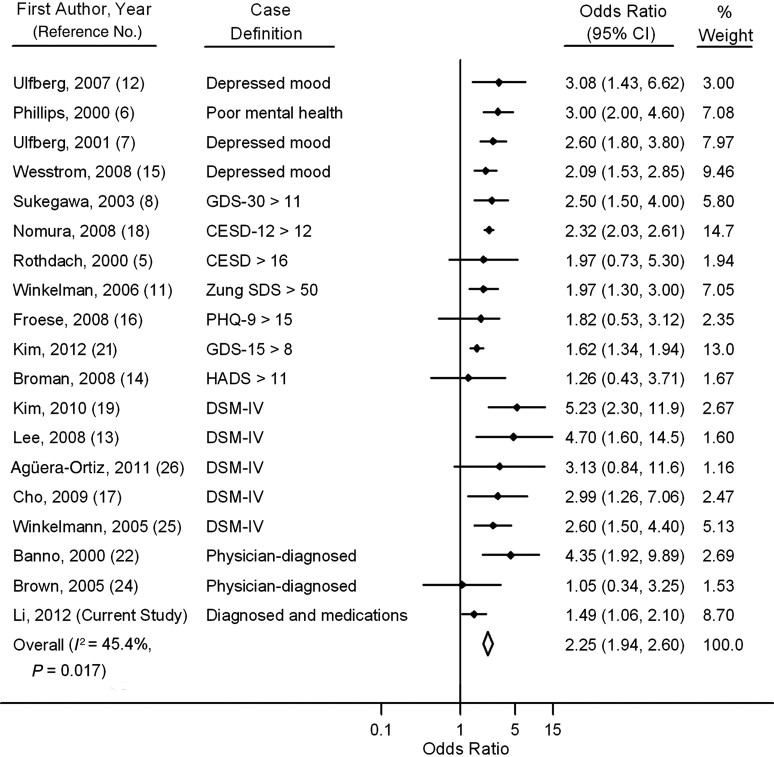Figure 1.
Associations between restless legs syndrome and depression in previously published studies, in the Nurses' Health Study cohort (current study; 2002–2008), and in a pooled meta-analysis of Nurses' Health Study participants (diamond; 2002–2008). Only crude odds ratios were available from the studies by Sukegawa et al. (8), Ulfberg et al. (12), Kim et al. (19), Banno et al. (22), Brown et al. (24), and Agüera-Ortiz et al. (26), and only pooled odds ratios were available from the studies by Winkelman et al. (11) and Broman et al. (14), who reported odds ratios for depression according to the severity of restless legs syndrome. Case definitions of depression included 1) self-reported symptoms of depression (depressed mood or poor mental health) assessed by means of a single question or with an unclear justification for the cutoff score; 2) self-reported symptoms of depression on a scale with a validated cutoff score, such as the 15- or 30-item version of the geriatric depression scale (GDS), the regular or 12-item Center for Epidemiologic Studies Depression scale (CESD), the Zung Self-rating Depression Scale (Zung SDS), the 9-item version of the Personal Health Questionnaire (PHQ), or the Hospital Anxiety and Depression Scale (HADS); 3) depression diagnosed according to the Structured Clinical Interview for the Diagnostic and Statistical Manual of Mental Disorders, Fourth Edition (DSM-IV); 4) physician- or clinician-diagnosed depression; and 5) physician- or clinician-diagnosed depression and use of antidepressant medication. Based on the Q statistic, P-heterogeneity = 0.017. Bars, 95% confidence interval (CI).

